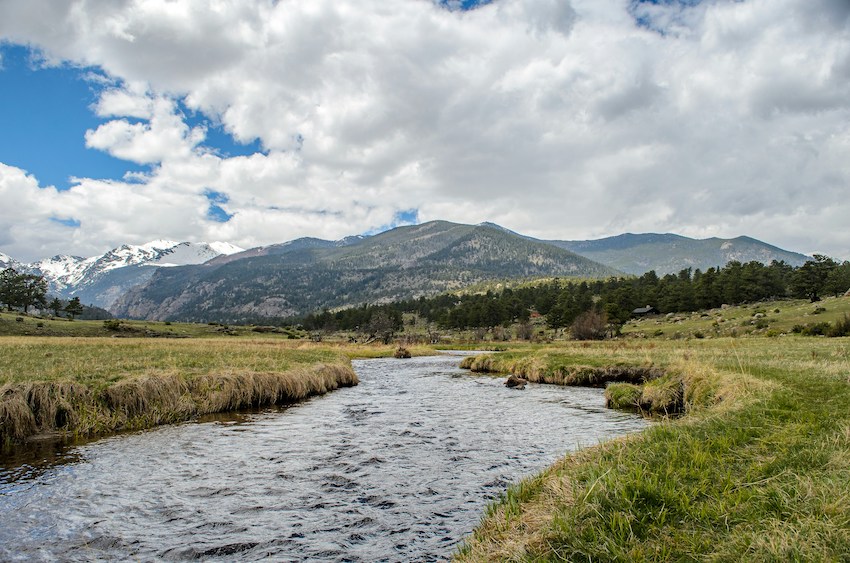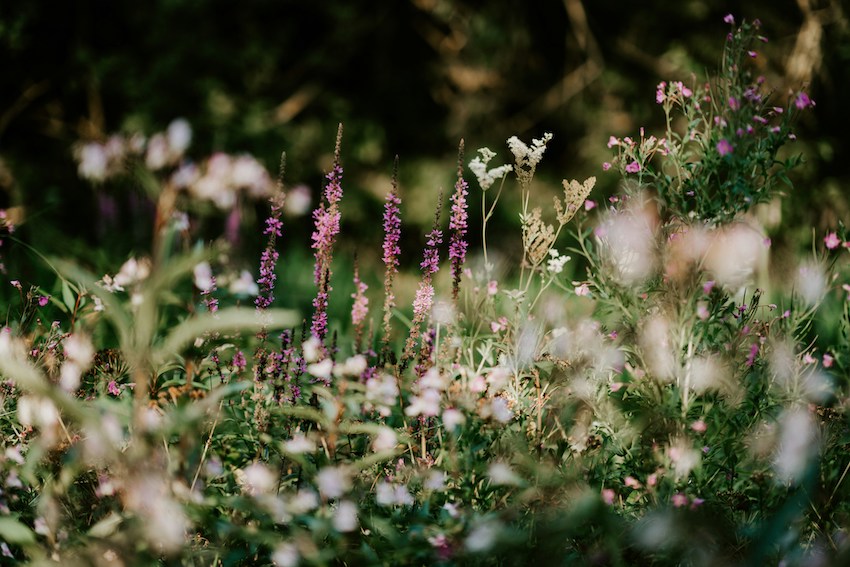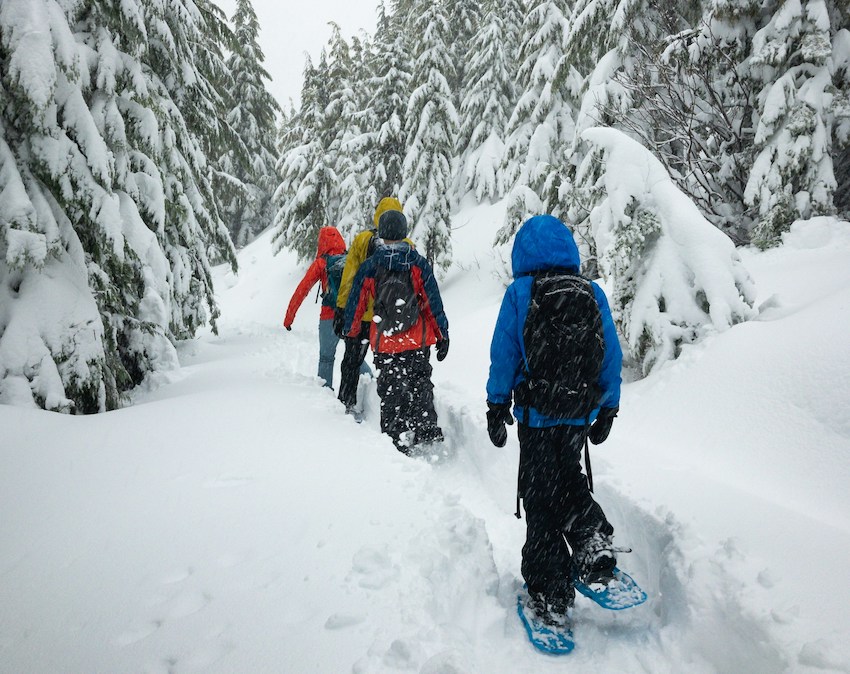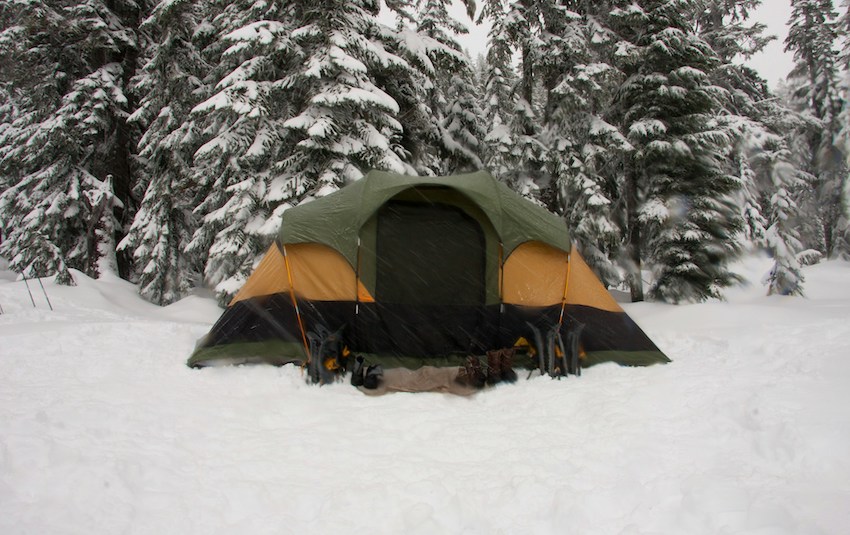Here in Northern Colorado, we are fortunate to have one of the country’s most visited and most treasured national parks right in our backyard. In fact, with 4,115,837 visitors in 2023, Rocky Mountain National Park was the 6th most visited national park in the U.S. in 2023!
While the summer is one of the most common times to visit the park, the spring is an underrated time to be there for a number of reasons — perhaps most notably, you can avoid some of the crowds making up that 4 million+ visitor count! But pleasant weather conditions, abundant wildlife, and other favorable factors contribute to the park’s allure during the spring months. Read on to learn what to expect — and what you can do — during the spring months at RMNP.
Benefits of Visiting RMNP in the Spring

Spring is one of the best times to visit Rocky Mountain National Park for a number of reasons. First of all, you’ll experience much less crowds than you would in the height of summer. In fact, visitation in April and May combined is equal to about half the visitation in the month of June alone! Plus, the weather is ideal for the activities listed below, from hiking to fishing, as life begins to return to the park in the form of active wildlife and blooming flowers. Snow begins to melt at higher elevations, which creates stunning waterfalls and rushing streams. Most wildlife also give birth during the spring, so you might just see some babies with their mothers resting in the plains.
Details to Know Before You Go
Eager to see the wildlife and baby animals? Don’t get ahead of yourself! There are several things to keep in mind before your visit to Rocky Mountain National Park.
-
If you don’t already have an annual pass, you’ll need to purchase one (or a standard entrance pass, which lasts 7 days) here. Beginning June 1, RMNP will only be accepting cashless payments at entrances and campgrounds for all fees and payments. And starting May 24, the park will implement a pilot timed entry permit reservation system to enter the park.
-
RMNP recently started offering voluntary automated gate transponders, which allow visitors to enter the park quickly during busy hours. They cost $15 initially and $5 for yearly renewals, and can be purchased at the Beaver Meadows Visitor Center from 9 a.m.–12 p.m. and 1-4 p.m. on Thursdays and Sundays. Click here for more information about this new system!
-
Keep in mind that Trail Ridge Road is typically closed through the end of May due to weather. And throughout the rest of the year, there is always a possibility of road closure in the case of extreme weather. Check here to see if the road is closed the day of your visit.
-
Always check the weather at the park before you go so you know if conditions are safe and if the areas you want to explore are open. You can check current trail conditions, learn about the weather status, and even view webcams to see live updates at some key locations in the park.
-
During the spring, there will likely be snow at higher elevations while the lower meadows will be snow-free. If you’re traveling beyond the meadows, make sure you are equipped with snowshoes and appropriate clothing. No matter where you’re going throughout the park, come equipped with plenty of layers, as temperatures typically run about 10 degrees cooler than Estes Park.
Hiking

Hiking is one of the most popular activities at Rocky Mountain National Park all year long — especially in the spring, summer and fall. But due to snow and ice at higher elevations in the spring, it’s usually a good idea to stick to the lower valleys for your hikes. But don’t worry — the snowmelt will create some stunning waterfalls and wildflowers are beginning to bloom, so you’ll be surrounded by stunning natural beauty on your adventure. Some of the best trails for hiking during the spring include Cub Lake, Emerald Lake, Ouzel Falls, Fern Falls, Sky Pond, Bear Lake Loop, Deer Mountain, Chasm Falls, and East Inlet Trail.
Wildlife Viewing

Spring is one of the best times to spot wildlife throughout the park, as there are 67 mammal species known to be native to the area. But during the spring, it is common to see elk, bighorn sheep, mule deer, and even some moose, marmots, pikas and otters, if you’re lucky. Many animals move to lower elevations during the fall, winter and spring, before migrating to the alpine in the summer. So you can often see elk and bighorn sheep resting in meadows with their young. Click here to learn more about the wildlife you might see throughout the park!
Fishing

Spring is an excellent time to go fishing at Rocky Mountain National Park, as snow begins to melt, sending fresh water and food into the park’s many lakes and rivers. Cast your line to catch some native greenback cutthroat, Colorado River cutthroat trout, and other species of fish. Some of the best locations for spring fishing include Loch Vale, Poudre Lake, Black Lake and Peacock Pool. Everyone over 16 years of age must have a Colorado Fishing License to fish in the park!
Wildflower Viewing

Later in the spring, wildflowers begin to populate the mountain meadows and trails throughout Rocky Mountain National Park, especially if snowfall has been particularly heavy that winter. If you time your visit just right in late April or early May, you can see a few different species of wildflowers, including Indian Paintbrush, Forget-me-nots, Alpine Avens, Alpine Sunflowers, and more. Some of the best trails to see this kaleidoscope of color include the Toll Memorial Trail, Tundra Nature Trail, Nymph Lake, Cub Lake, Ouzel Falls, and Ute Trail.
Snowshoeing

If you’ve lived in Colorado for a while, you know you can often enjoy a number of winter activities well into the spring, including snowshoeing! At higher elevations, there’s still plenty of snow to explore via snowshoe — but time is running out. From January through March, ranger-led snowshoe walks are offered to the public. You’ll travel along hilly, uneven, snow-covered meadows or mixed conifer forests within the park, on both the east and west side. Click here for more information about these exhilarating tours!
Camping

Fully immerse yourself in the park by pitching a tent at one of the many campgrounds in RMNP. Due to lingering snow and colder temperatures during the spring, it is technically considered “winter camping” when you camp through May 20, 2024. For this season, the only campground open at this time is Aspenglen Campground, which has 27 campsites available on a first-come, first-served basis. Click here for more information about camping at Rocky Mountain National Park!
Happy Exploring
Enjoy your springtime visit to Rocky Mountain National Park!
Comments